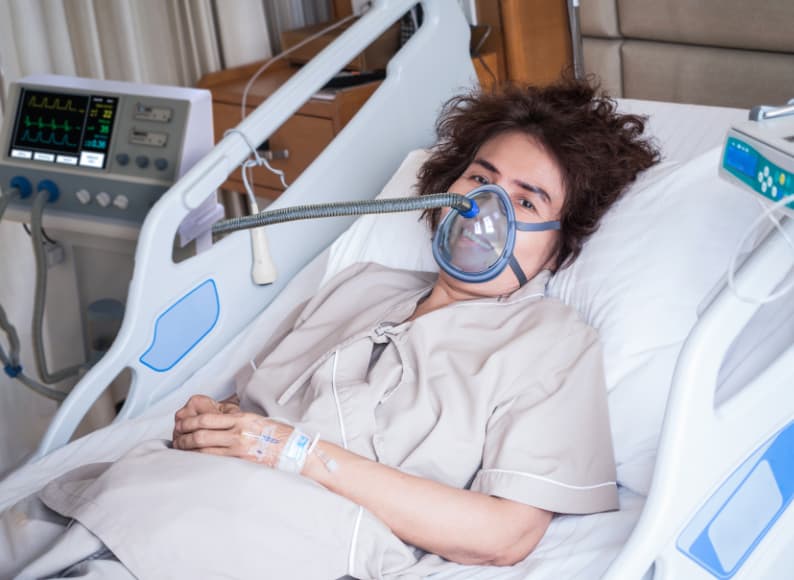Diaphragm hibernation: New mechanism discovered in ICU patients on mechanical ventilation
Researchers at Amsterdam University Medical Center have uncovered a novel mechanism explaining diaphragm weakness in mechanically ventilated intensive care patients, potentially paving the way for new treatments to aid ventilator weaning.
Mechanical ventilation in intensive care units (ICUs) has been thrust into the spotlight since the COVID-19 pandemic. While often life-saving, prolonged ventilation can lead to diaphragm weakness, complicating the process of weaning patients off ventilators. Now, a groundbreaking study published in Science Translational Medicine [1] has revealed a previously unknown mechanism behind this weakness, offering hope for future interventions.
The hibernating diaphragm
The research team, led by Professor Coen Ottenheijm of Amsterdam UMC, discovered that in mechanically ventilated ICU patients, the diaphragm – the primary muscle responsible for breathing – enters a state of ‘hibernation’. This state is characterised by the main muscle protein, myosin, becoming trapped in an energy-sparing configuration within diaphragm muscle cells.
“Since the corona-pandemic, mechanical ventilation in the ICU has gained lots of attention. The failure to wean from ventilation costs many lives, as well as billions of euros per year,” said Professor Ottenheijm. “Our discovery will further boost the development of drugs that wake up hibernating proteins in the respiratory muscles to facilitate weaning from ventilation.”
Unravelling the mechanism
The study compared diaphragm biopsies from 54 ventilated ICU patients with those from 27 non-ICU patients undergoing thoracic surgery. Through a combination of myofiber force measurements, X-ray diffraction experiments, and biochemical assays, the researchers identified that myosin in the diaphragm muscle fibres of ventilated patients was predominantly found in a ‘super-relaxed’ state.
In this super-relaxed state, the myosin head lies close to the thick filament backbone and does not bind to actin, leading to reduced contractility. This configuration initially benefits patients by conserving energy during critical illness. However, as patients recover and attempt to breathe independently, these hibernating myosins prove difficult to reactivate, compromising diaphragm strength and impeding the weaning process.
Specificity to the diaphragm
Interestingly, the researchers found that this phenomenon appears to be specific to the diaphragm and not a general consequence of critical illness. Studies on quadriceps biopsies from ICU patients and diaphragm samples from previously healthy mechanically ventilated rats supported this conclusion.
Potential for targeted interventions
The discovery of this mechanism opens up new possibilities for targeted interventions. In vitro experiments showed that small-molecule troponin activators could restore force levels in diaphragm muscle cells from ventilated ICU patients.
“With this research, we also show that small molecule troponin activators can restore the force levels in diaphragm muscle cells from ventilated ICU patients,” Prof. Ottenheijm explained. “This could be a lead for drug development to ‘wake up’ the muscles of these patients from the state of hibernation.”
Future directions
The findings from this study have significant implications for future research and clinical practice. The research team is planning to initiate studies testing the efficacy of troponin activators in ICU patients, potentially leading to new treatments for ventilator-associated diaphragm weakness.
This research represents a crucial step forward in understanding and potentially treating diaphragm weakness in mechanically ventilated patients. By targeting sarcomere proteins, it may be possible to improve diaphragm contractility and facilitate the weaning process, ultimately reducing mortality rates and the economic burden associated with prolonged mechanical ventilation.
Reference:
- van den Berg, M., et al. (2024). Super-relaxed myosins contribute to respiratory muscle hibernation in mechanically ventilated patients. Science Translational Medicine. https://doi.org/10.1126/scitranslmed.adg3894


